If all goes to plan, this year will see the first external exams since 2019 and the return of Key Stage 4 and Post-16 performance tables.
Advance information will be provided to candidates to try to mitigate the disruption they’ve faced throughout the pandemic. But grading is due to be harsher than in either of the previous two years.
With all of these factors at play, we thought it would be a good time to explore Year 11 pupils’ experience of the pandemic via their absence rates over the past 18 months – from the beginning of Year 10 to the end of Autumn Term of Year 11.
The data we’ll use is from around 2,600 secondary schools subscribed to Attendance Tracker.
The year so far
Let’s start with the most recent period: Autumn term 2021. We’ll look at how many sessions were missed[1] by Year 11 pupils compared with those in other year groups.
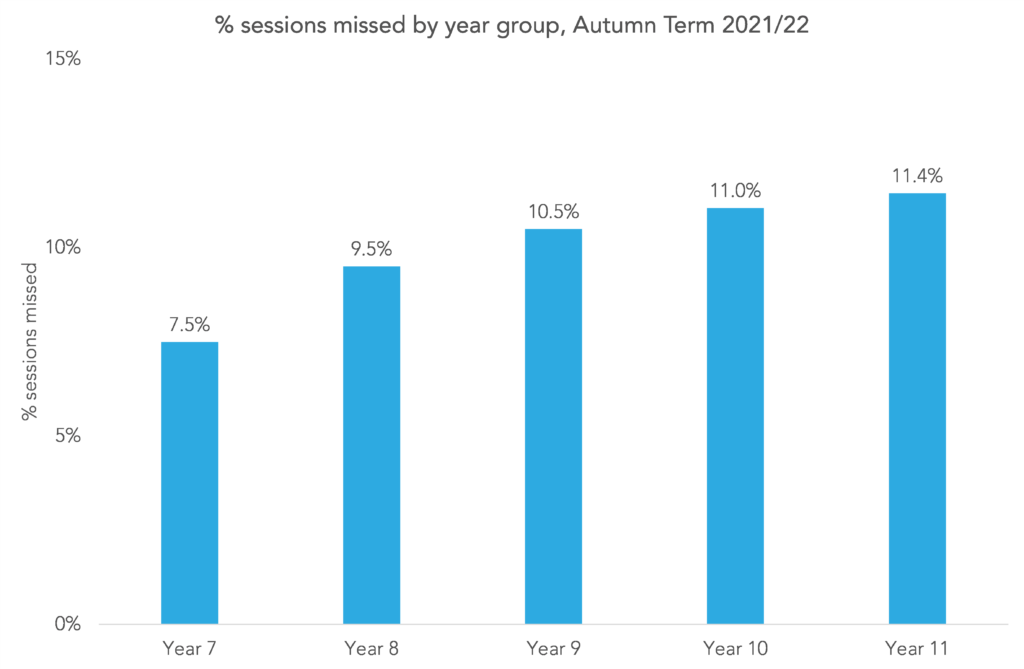
Year 11 missed more sessions than any other year group last term. Absence increasing with year group is a pattern we’re familiar with, both during the pandemic and before. It’s still concerning though, particularly when you compare the 11.4% of sessions missed by Year 11 pupils with the 6.5% of sessions missed in Autumn 2019, i.e. pre-pandemic.
Adding in last year
Now, let’s widen our view by bringing in our current Year 11s’ experience of Year 10.
To do this we need[2] to restrict ourselves to pupils who belonged to the same school in Year 10 and 11 and to schools who used Attendance Tracker in both years. This takes the number of schools in our sample to 2,000.
Here are the results:
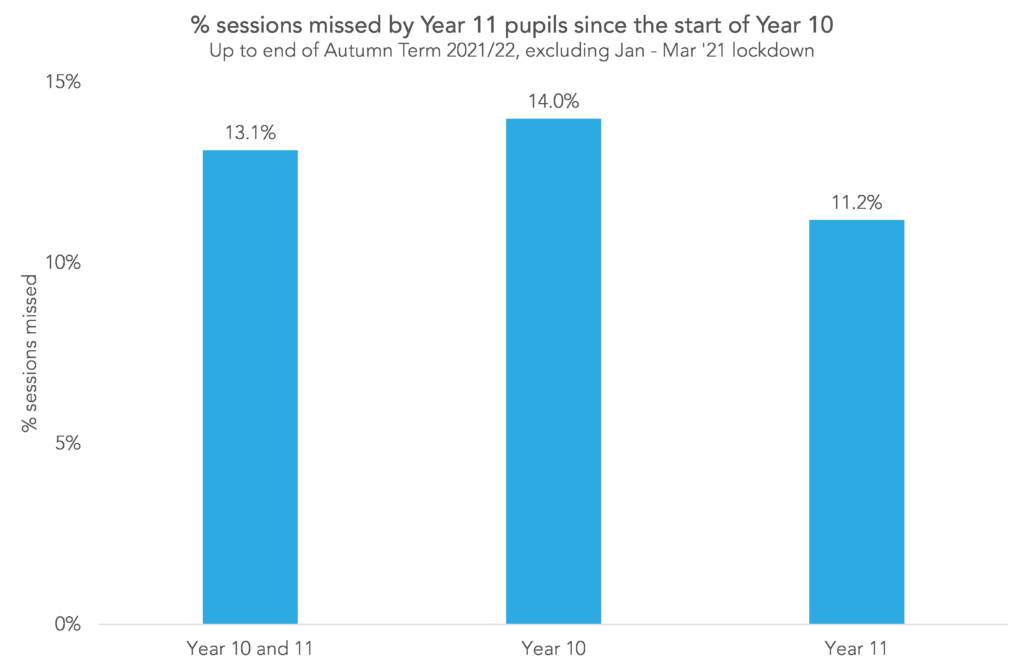
Up to the end of last term, Year 11 pupils had missed an average of 13.1% of sessions throughout Year 10 and 11, excluding the January to March lockdown period. That’s roughly equivalent to five and a half weeks of school missed – around four weeks last year and about a week and a half up to Christmas this year.
When we break it down by disadvantage, we get the following:
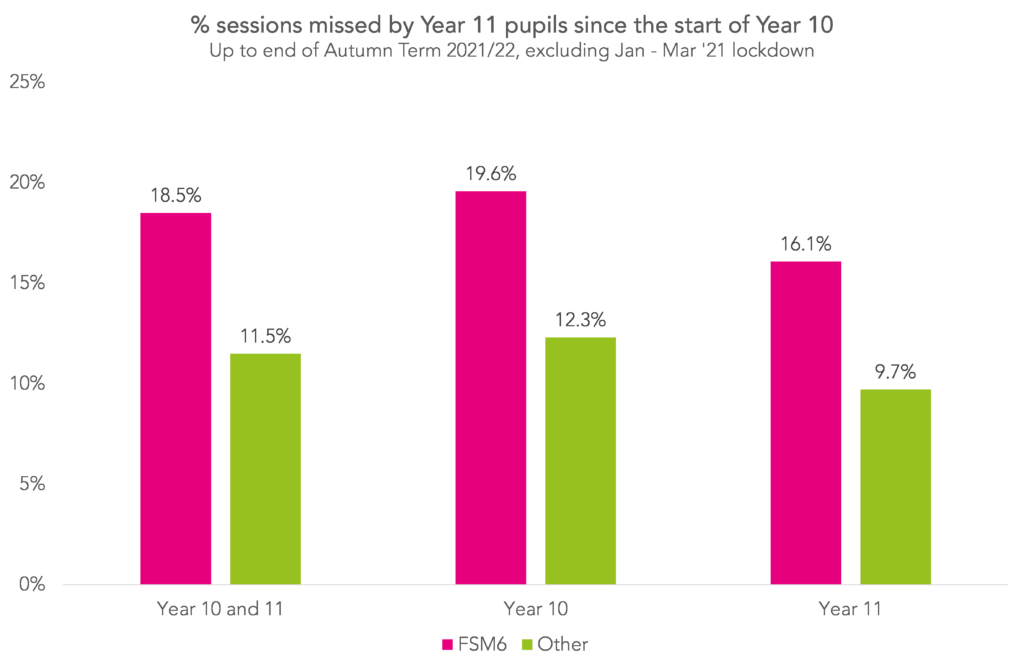
The 18.5% of sessions missed by disadvantaged pupils is the equivalent of around eight weeks of school, again excluding last year’s lockdown. Other pupils missed an average of 11.5% of sessions, or around five weeks of school.
We can go a step further here and ask how much of the gap in absence rates between disadvantaged pupils and others was due to the schools they attend – perhaps disadvantaged pupils are just more likely to attend schools with higher absence rates overall. When we run the numbers, we find that just 12% of the gap can be explained this way. So the vast majority of the gap is down to disadvantaged pupils having higher absence rates than their peers at the same schools.
Distribution of pupils
Of course, these numbers are only averages: some pupils will have missed a lot less school and others a lot more. Let’s start with pupils who have missed relatively little.
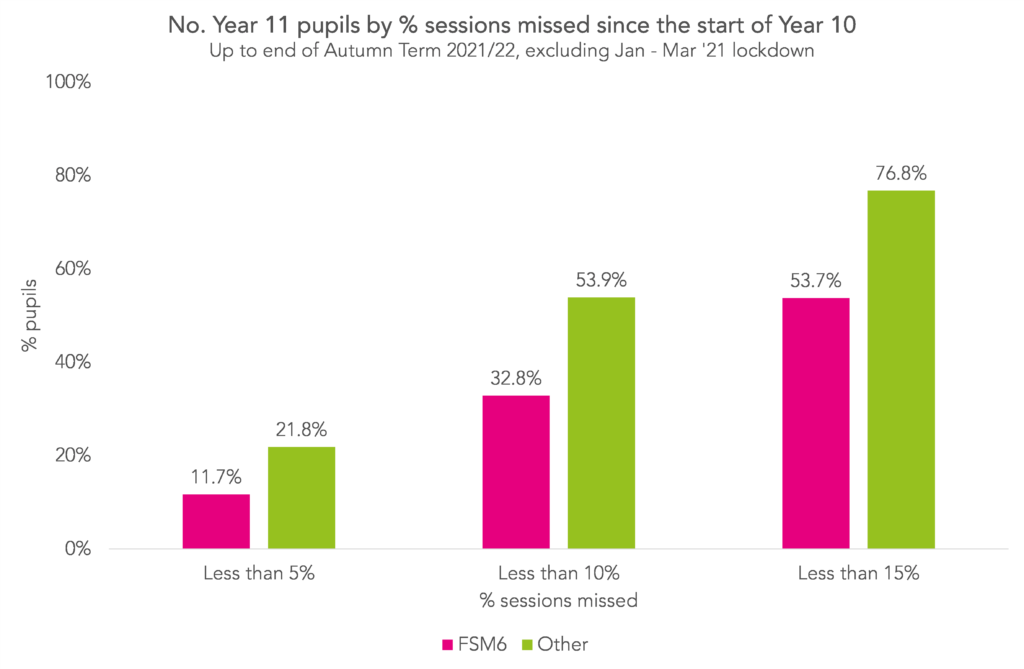
Overall, 19.5% of Year 11 pupils missed less than 5% of sessions. However, while 21.8% of non-disadvantaged pupils were in this group, only 11.7% of disadvantaged pupils were. Similarly, 53.9% of non-disadvantaged pupils missed less than 10% of sessions, whereas only 32.8% of disadvantaged pupils did.

At the other end of the distribution – pupils who missed large amounts of school – we see similar patterns. 16.3% of disadvantaged pupils missed at least 30% of sessions, the equivalent of a full term, compared with 4.6% of their peers. And disadvantaged pupils were around four times more likely to have missed more school than they attended.
Distribution of schools
To finish, let’s look at how absence varied by school.
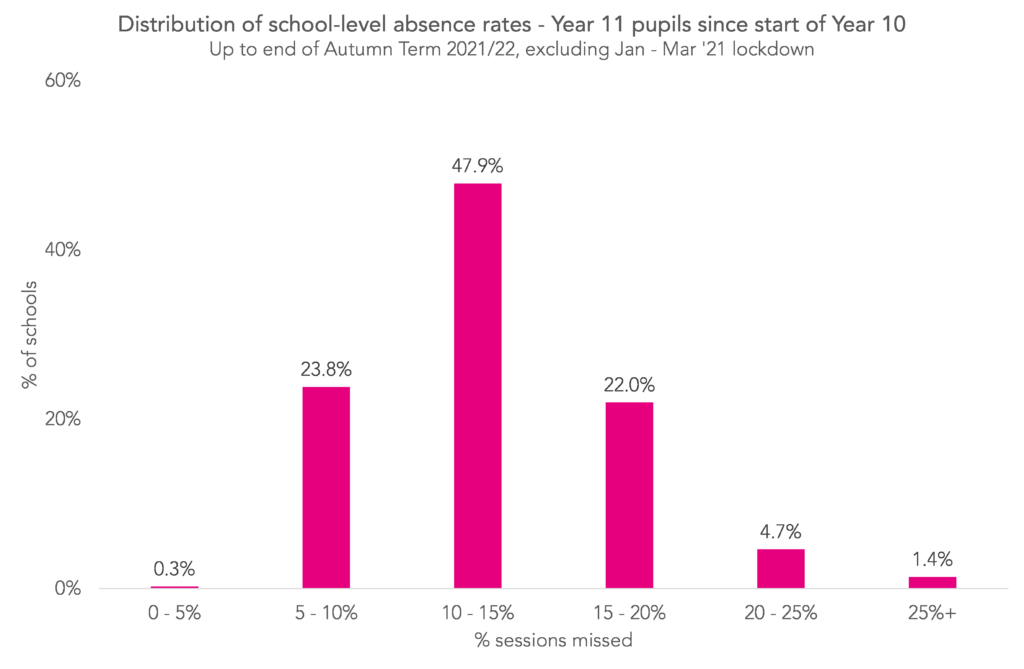
The absence rate for Year 11 pupils over the last two years was between 10% and 15% at around half of schools. However, the absence rate was much higher in some schools. 6% of schools had an absence rate exceeding 20%.
We can dig down a little here by looking at how this distribution varies by region.
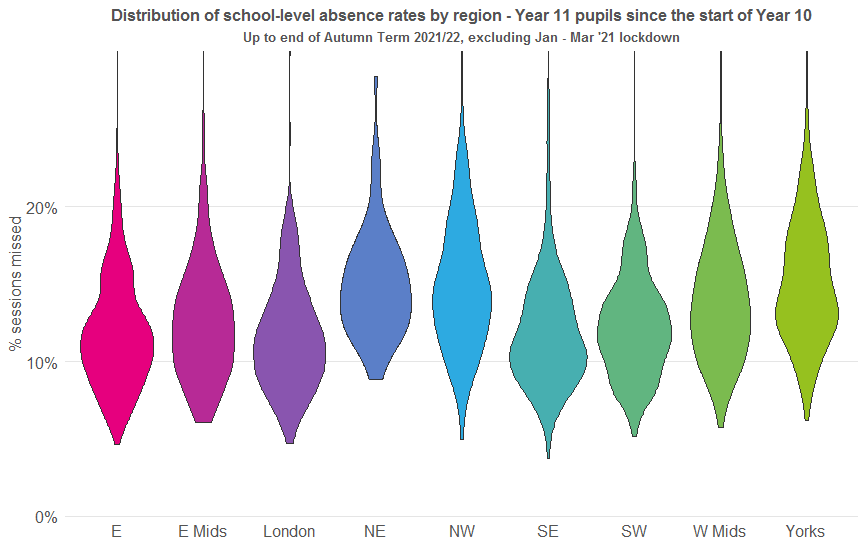
Broadly, we see that schools in northern regions – the North East, North West and Yorkshire and the Humber – have more schools where Year 11 pupils have missed lots of sessions. The reverse is also true, with schools in southern regions tending to have more schools where Year 11 have missed fewer sessions.
Aspire Attendance Tracker
Schools can track, analyse and compare their attendance data against 1,000s of other FFT schools using Aspire Attendance Tracker.
Log in to Aspire to access Attendance Tracker – log in here.
Not an FFT Aspire user? Learn more here.
Wrapping up
Overall, Year 11 pupils have missed a lot of school since the start of the pandemic. However, some pupils have missed relatively little and others have missed much more.
As well as being more likely to be absent from schools, concerns have also been raised that disadvantaged pupils suffer from poorer access to internet and devices in order to catch up with work.
Against this backdrop, it is vital that exam mitigations put in place by the DfE act to level the playing field.
Want to stay up-to-date with the latest research from FFT Education Datalab? Sign up to Datalab’s mailing list to get notifications about new blogposts, or to receive the team’s half-termly newsletter.





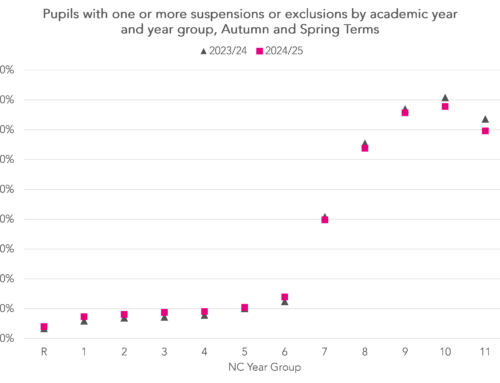
Leave A Comment